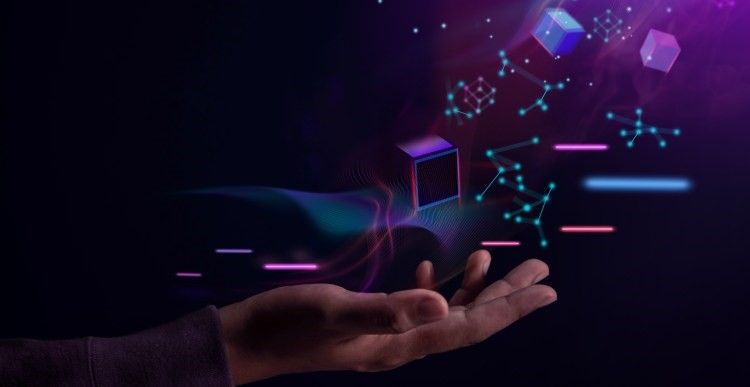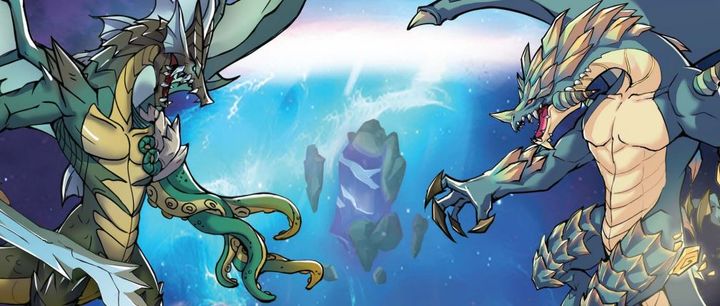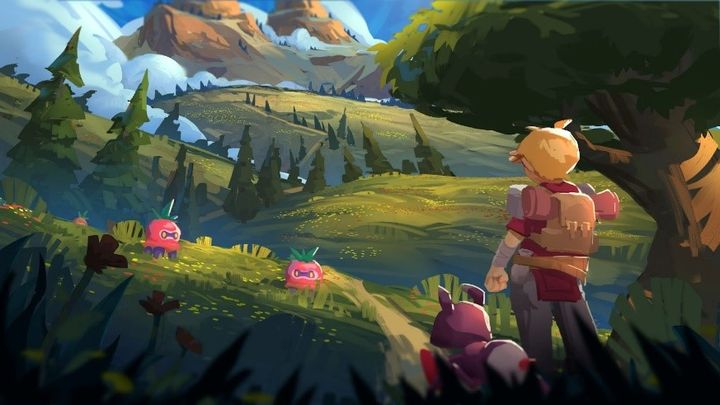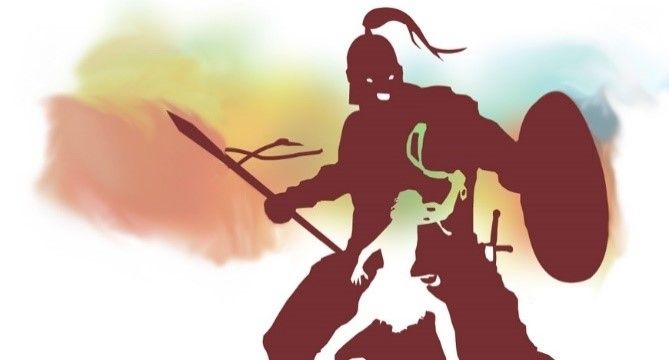Over the past year in the Web3 gaming space, it’s becoming increasingly clear that the shine associated with games built solely on the prospect of Web3 integration has faded. Whether a game involves a token or NFTs just doesn’t matter much anymore, particularly when most these in-game assets are worthless.
This isn’t to say that blockchain technology has no place in gaming. Gamers have shelled out endless amounts of cash for unique skins and other in-game digital assets in the past — how I bet they wish they had real ownership over these items (whether they realize it or not). For these reasons, it’s inevitable that traditional gaming studios will slowly start incorporating NFTs and other blockchain technologies into their titles, even it they serve as minor components within the game. See Sony’s (PlayStation) recent NFT patent filings for an example here.
All this being said, there’s still one area within gaming that I see Web3 integration thriving. Let’s stop trying to fit a square peg into a round hole and forcing Web3 onto traditional gamers. That’s an uphill battle. Rather, look for areas within gaming that already embrace what blockchain technology facilitates, such as ownership and value transfer. It is here, at the intersection of gaming and the creator economy (e.g., Roblox and Minecraft), where tremendous opportunity awaits those that are able to solve existing pain points at scale.
Creator Economies
The creator economy is an umbrella term that captures platforms and apps like YouTube, TikTok, Instagram and Twitch — all of which allow content creators and influencers to earn revenue from their creations.

A subsegment of gaming is also included here. See below for a recent quote from Roblox which captures the essence of the creator economy as it relates to gaming.
“Since our earliest days, Roblox’s economy has been driven by our creators. Over the years, their ingenuity has made our economy vibrant and dynamic, and by 2022, our platform’s GDP had grown to become as large as that of some countries.
Picture Roblox as a nation with people producing and selling goods and services and others buying or consuming them. Every day, 66 million visitors come to Roblox from 180 countries to enjoy immersive experiences, education, social connections, virtual goods, and more. In short, Roblox has become one of the biggest virtual economies on Earth.
Like our platform, our vision for our economy is that it models and reflects the real world, but with the ability to go above and beyond by overcoming physical limitations. So today, we want to share the three fundamental principles behind that vision: first, our economy should be seamless for anyone to participate; second, it should serve our community; and third, it should empower creators of all sizes to launch and scale a business.” — Enrico D’Angelo, Vice President of Economy (Roblox)
The above is actually quite remarkable, and I’m sure most people don’t realize the amount of buying/selling and value creation that is occurring on platforms like Roblox on a daily basis. Right at home for Web3 integration.
What is key here is the creator aspect of platforms like Roblox, which is not a game per se but rather a development platform upon which millions of others can craft their own experiences, games or even businesses. In this way, success is not tied to one developer or narrative, and all creators are incentivized to better the ecosystem as a whole as part of a positive feedback loop. Although gaming is the glue, the dynamic interrelationship between the myriad of creators and players involved make the ecosystem like a well-functioning market.
For added context on the size and related potential of some of these gaming economies, see the next section on Roblox and Minecraft.
Major Gaming Creator Economies
Two of the largest gaming creator economies right now are Roblox and Minecraft.
Roblox
As introduced previously, Roblox provides gamers the tools to both create and play an almost unfathomable array of experiences — see below for some additional stats to get an idea of scope.

- Over 65 million users play on Roblox every day (200 million every month), with the majority of users between the ages of 13 and 17
- People spent 14.5 billion hours playing Roblox in the first quarter of 2023 alone
- There are over 40 million games on the platform
- The platform has over 9.5 million developers
- A number of top brands such as Nike (Nikeland) and Gucci (Gucci Town) have built popular experiences as corporate gateways into the ‘metaverse’
- Roblox Corp (NYSE: RBLX) has a ~$17 billion market cap as of August 2023, and traded well over $50 billion during the peak of the metaverse hype near the end of 2021
- The company generates significant revenue, earning $2.2 billion in 2022 (up 16% YoY). The majority is earned through the sale of Robux (virtual currency) that players use to purchase in-game features or customizations like custom avatars, advertising (partnerships with Disney, Lego, Warner Bros, etc.) and other means such as licensing of IP and royalty fees.
These network effects have also deservedly translated into profit for creators and not just Roblox’s bottom line. In 2022, creators earned $624 million in total, and an additional $182 million in the first quarter of 2023. Most of this creator profit comes from the in-game sale of digital items or experiences for Robux, as there were more than 3.2 billion virtual transactions in 2022 (people purchased 1.8 billion avatar items on the Roblox marketplace in 2022). The ten highest-earning creators in 2022 earned an average of $23 million each, and nearly every creator within the top 500 earned at least $140,000.
These are insane numbers. One of the biggest critiques that traditional gamers have on Web3 is that any ‘earnings’ component ruins the purity of the experience. Kind of ironic, particularly given how outward Roblox is toward supporting creators and their earnings which largely come from the sale of Robux.
“By offering a wide array of ways to monetize, we’re helping creators of all sizes diversify how they earn, or simply choose the method that feels right to them.” — Enrico D’Angelo, Vice President of Economy (Roblox)
Minecraft
After hearing about Roblox, not much more needs to be said about the potential and demand for creator-centric gaming platforms. However, it’s important to at least briefly mention Minecraft, which today still stands as the best-selling video game of all time.

Unlike Roblox, Minecraft is more akin to a traditional gaming experience and less a developer-focused platform. However, creation is still central to Minecraft’s success, as users are provided limitless opportunity for exploration and creation within Minecraft’s various voxel-based game modes. Numerous Minecraft ‘mods’ (independent, user-made servers that modify or enhance the original Minecraft game with add-ons and other new content) are also very popular and show demand from a developer perspective.
Similar to Roblox, the Minecraft ecosystem is massive. There’s over 160 million monthly active players and the company generates hundreds of millions of dollars annually primarily from sales of the game (unlike Roblox which is free-to-play), the sale of Minecoins (which is Minecraft’s in-game digital currency and the Robux equivalent), cuts of marketplace creator fees (the marketplace has seen more than 1.7 billion pieces of content downloaded and more than $500 million in revenue generated by the creator community) and merchandise.
Microsoft also thought enough of the opportunity to purchase the game for $2.5 billion in 2014.
Opening the Door for New Entrants
The integration of blockchain technology (tokens, NFT avatars/wearables, etc.) into ecosystems like Roblox and Minecraft only seems a small step away. Virtual currencies facilitating hundreds of millions of annual dollar value in transactions already occur. Why wouldn’t a gamer simply want the avatar wearable that he/she purchased to be an NFT so that they can have actual ownership over it irrespective of the game? Remember, if Minecraft or Roblox shuts down, so go user assets.
The answer is money of course. Whether gamers realize it or not, corporations like Roblox and Microsoft have feasted on user-generated content over the past decade, and they are not about to sacrifice their business models for the sake of innovation.
Take Robux and Minecoins as an example. A lot of Roblox’s and Mojang’s profit comes from the monopolistic control of these in-game digital currencies, the sale of which they take a significant cut of. The various restrictions on cash outs also directly or indirectly lock these currencies into the ecosystems for good, then incentivizing users to make more in-game marketplace purchases of which the companies take a further cut. Minecoins can never be converted back to real currency — what goes in is Minecraft profit and stuck in the ecosystem forever. Robux can be converted at an exchange rate of $0.0035 per Robux (with restrictions), although Roblox’s terms specify that it’s in the company’s sole discretion whether to offer users a cash out and also how much users are eligible to receive.

There’s clearly a power asymmetry involved here. This isn’t necessarily a bad thing as all companies need to make money to keep developing, but it does open the door for new Web3 entrants that are tailor made to address some of these market inefficiencies and pain points.
We’re talking true digital ownership (NFTs), full cash outs, open markets underpinned by real-world token value and more. It’s not a radical change from the existing platforms, but still an important shift that I believe at least some of the massive TAM from Roblox and Minecraft will appreciate. And remember, taking even a small % of these massive user bases would translate into being the top Web3 game in the world in the current market.
For up-and-comers, I have my eyes on HYTOPIA in particular which I’ve written extensively on before (read the documents).

Closing Thoughts
Although there’s clear market opportunity here, there’s also a few major hurdles, not least of which is user acquisition. Platforms like Roblox and Minecraft have major network effects with 10+ years of development experience and engagement from hundreds of millions of MAUs — this kind of traction is very hard to replicate. Just ask Decentraland and The Sandbox. Either new entrants force there way in by capturing the imaginations of players in novel ways to build momentum (difficult but possible; companies like Meta also fit here given their wallet) or alternatively find ways to take market share by other means. The latter route is what HYTOPIA is doing by making their platform backwards-compatible with Minecraft servers.
If someone can figure it out and carve a spot next to Roblox and Minecraft, the potential reward is massive. A multi-billion dollar market demand is already proven, and this is one area in gaming that Web3’s integration is not forced and can clearly enhance the existing state of affairs.
References
- Our Vision for the Roblox Economy
- Roblox Robux — What do they do in Roblox?
- On Roblox, Kids Learn It’s Hard to Earn Money Making Games
- 9 Vital Roblox Statistics to Show How Big It Is In 2023
- Roblox vs. Minecraft: 9 Key Differences and Full Comparison
- How Does Roblox Make Money?
- Minecoin Buying and Selling FAQ
- 39 Minecraft Statistics 2023 (Users, Servers, & More)
- Lessons from Minecraft Marketplace





Comments ()